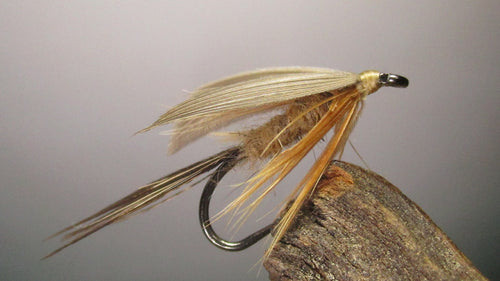Fly of the Month
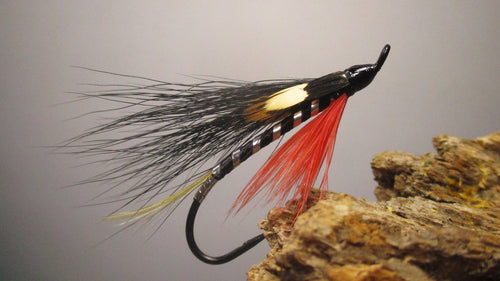
Fly of the Month - Black Demon
This month’s pattern is Matt O'Neal (Savage Flies)'s variation of C. Jim Pray’s original Black Demon streame...
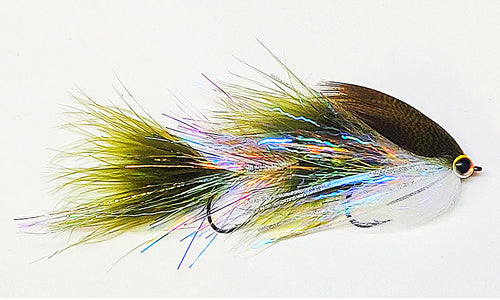
Satkowski’s Flank Steak Articulated Streamer - Fly of the Month
I usually fish this articulated streamer with a floating line when the water is lower in the late summer months, they are especially effective when you want to imitate a wide-bodied prey item such as shad or sunfish. I cast out and erratically retrieve the fly in short three or four inch strips and then let the fly pause for a bit. The tail will really sway and wag in the current, and the flash and legs really gets the fish to target the fly aggressively. In the late summer shad will move into my local river and the bite is on. I have included my favorite colors for the Flank Steak, tie some and go whack some fish.
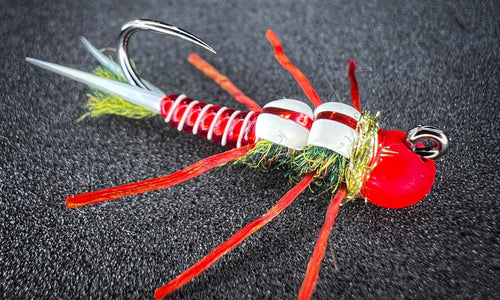
Christmas Stonefly Jig - Fly of the Month
Guest Blogger: J. Stockard Pro Chris Williamson from Washington state. Follow Chris on Instagram @lessthanci...
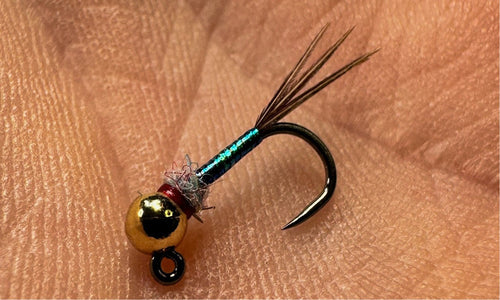
Jigged Rainbow Warrior - Fly of the Month
As we move into the colder months, the Rainbow Warrior tends to lure finicky fish when nothing else is working. There's several different variations for this, but here in the Shenandoah Valley, Virginia, using black thread under the flash seems to be the ticket. If the black thread isn't doing the trick, try a few different colors to find just the right look that the trout are going for.
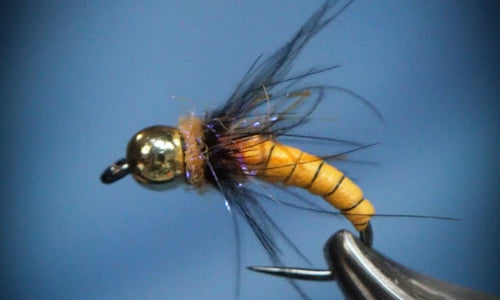
Razor Foam October Caddis - Fly of the Month
The Razor Foam October Caddis is a fly that I've been tweaking for the past year, and I finally have the pattern finalized. The CDC collar not only gives the fly lots of movement, but paired with the foam body, it allows it to sink rather slow. You can use a tungsten, or brass bead on this one, depending on how fast you want the descent.
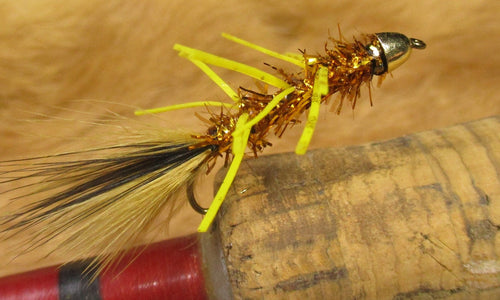
TeQueely Streamer - Fly of the Month
This month’s pattern will be familiar to many smallmouth (and big trout) anglers and for good reason. It has been a killer warmwater streamer throughout the country and guides from Idaho to Virginia will swear by it.
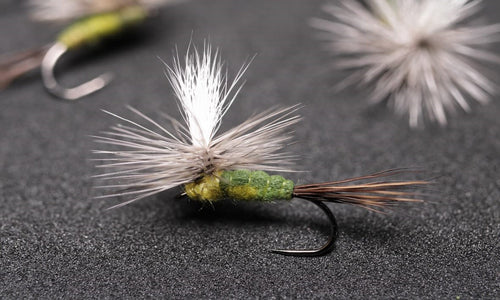
Mr. Floaty Unsinkable Green Drake - Fly of the Month
This is a green drake pattern with added foam for an unsinkable parachute pattern!
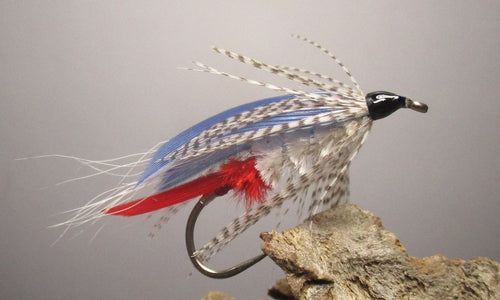
Bumblepuppy - Patriotic Version - Fly of the Month
The exact version of this month’s pattern comes with a bit of mystery behind is provenance. The original is most definitely credited to the legendary Theodore Gordon, who is most remembered as the father of the American dry fly. One of the first hair wings of this type, Gordon likely created the Bumblepuppy in the 1890s. In a 1903 letter to John Gordon, published later in The Complete Fly Fisherman, he sings its praise:
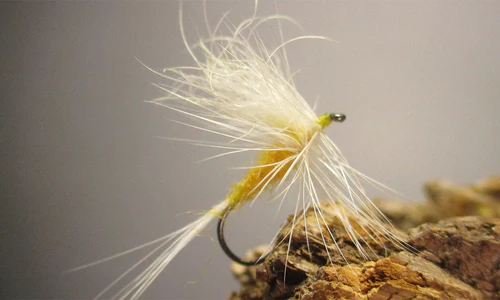
Snowshoe Hare's Foot Sulphur Fly - Fly of the Month
This month’s pattern is a simple take on one of the most prevalent mayflies to hit our springtime waters-- the Ephemerella Invaria, or more colloquially called the Sulphur Dun by fly fishermen. Depending on your geography they may differ slightly in size and coloration, but they all have one thing in common-- a yellowish body and white wing.
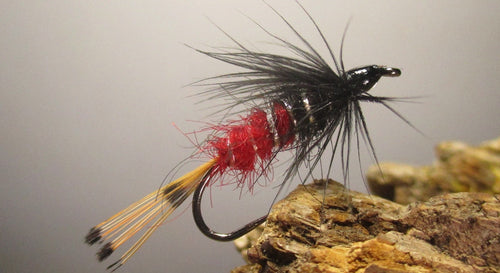
Red Arrow Wet Fly - Fly of the Month
This month’s pattern is coming to us from a plate in John Robert’s “Illustrated Dictionary of Trout Flies.” The Red Arrow is a traditional Irish wet fly created by Syl Higgins, a dentist from Longford, Ireland. Originally tied with a two-toned body of red and black seal’s fur, today’s tiers usually substitute with an imitation dubbing.
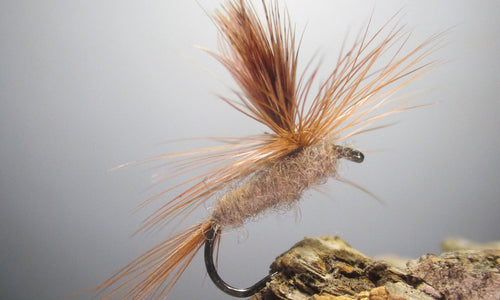
March Brown Parachute Fly - Fly of the Month
It’s now March and many of you trout fishermen know what that means- the March Browns will be hatching any week now. So what exactly is a March Brown? In short, it’s a mayfly, and usually it’s some shade of brown. It can be found in abundance in the larger, clean rivers throughout the world, but quite often in smaller trout waters as well. It’s no mystery how it got its name. It is usually one of the earliest emerging mayflies of the year, typically the end of winter (ie, March to early April).
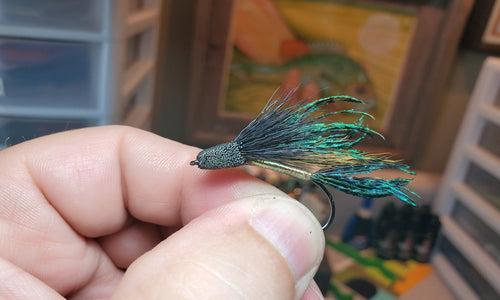
Bailes' Modern Muddler Minnow Variant - Fly of the Month
This fly is one I’ve been using on smallmouth and trout in smaller water. The bend in the hook and head profile creates an erratic swimming action that attracts fish in all water conditions. Although the fly really shines when you are fishing low or smaller waters where fish can spook easy, as this fly lands softly but has a lot of movement once it gets subsurface unlike many small streamers that are just profile-oriented and don’t have as much swimming action.

